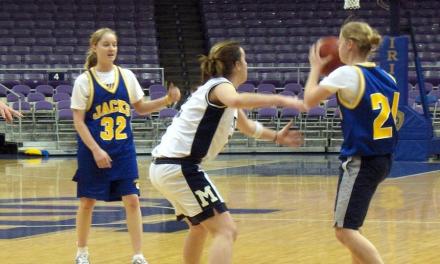Teaching a group how to pass the relay baton can prove to be an exercise in slowing down as much as it is speeding up the changeover. To properly develop technique, young athletes need to be walked through the process.
Inefficient baton passing will lead to slower race times and lower their enthusiasm for the relay as they struggle to “get it right”.
So, practising technique from the beginning keeps the group interested and encourages a sense of achievement every time they successfully progress from one stage to the next.
Choosing your passing style
There are three distinct recognised methods for passing the baton and all have their pros and cons.
The “upsweep” involves the incoming athlete passing the baton upward into the receiving hand. This is a good method for receiving as the hand is in a natural position, but it means that the baton will need to be manipulated before the next handover and this can be difficult for young athletes.
With the “downsweep” method, the baton is passed downward into the receiving hand. On the plus side, this handover method requires no manipulation before the next handover, but it can feel like an unnatural position for the hand of the outgoing athlete.
The final method is the “push pass” and this is often favoured as a safe method of baton exchanged. It involves the outgoing runner’s arm being extended with the hand open and the incoming runner vertically placing the baton straight into the open hand.
Choose a passing style based on your own preference and the capabilities of your group. You also need to decide whether your athletes will be passing to alternate hands or not.
If the class is of mixed ability, try to choose the style that will be accessible to the weakest members of the group. Once you’ve demonstrated how to pass the baton a few times, you can get the class started themselves with some practice techniques.
The stationary drill
A stationary drill allows a class to literally get to grips with relay baton passing.
Line the team up on the track in a staggered line and ensure that there is sufficient space for two arms to stretch between runners. This exercise involves the athletes standing still and passing the baton back and forth along the line to get used to the motions of passing and receiving.
Verbal cues allow the handover to be taken smoothly and this exercise allows you to correct the posture of runners.
The jogging drill
The jogging drill is similar to the stationary drill, but introduces more movement into the equation.
The team, still in their staggered line, jog lightly as they pass the baton forward before turning and passing it back along the line. This allows the group to get used to passing into a moving target and encourage teamwork between incoming and outgoing athletes as they use verbal cues to identify the right moment to pass the baton.
The sprinting drill
The sprinting drill is necessarily a step up from jogging and so you may want to reduce your team size to two in order to practice the handover technique effectively.
Have the two runners jog in their staggered positions for a stretch then the outgoing athlete dictates a sprint before passing the baton using a verbal command. The drill can then alternate back and forth between the pair until the handoff is perfect.
Learning how to effectively pass the relay baton can be a rewarding experience for the group. Using the methods above, they will go from standing still to sprinting passes and will hopefully maintain their interest in the relay through this staged teaching method.










